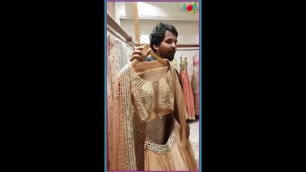'What Did Women Wear in the 1920s? 1920s Fashion Trends for Women (PART 2). STREET WEAR, DAYTIME CLOTHES. When a woman was done with her housewife chores, it was time to run some errands while her husband went to work. Clothing was still simple but of a higher quality than cotton prints. A walking suit (skirt, blouse and sweater) paired with a sturdy pair of mid-heel Oxfords, Mary Janes, or T-Strap shoes is the most utilitarian of the daytime dress. A tailored dress made of a silk blend crepe or wool was also appropriate. These dresses featured a natural waist sash in the early 20s that gradually moved down into a drop waist with a thin belt by 1926. Dresses fit loose and usually slipped on overhead. A small collar or wide open flat collar with a bow tie at the neck was essential to the ’20s wardrobe. Details were added to the dress that elongated the body such as vertical pintucks, a long necktie, a row of buttons, and pleated, draped or tiered skirts. Colors for city folk were a bit on the drab side: black, navy, grey, tan, and olive green. Country folk and seaside dwellers liked color: white in summer, yellow, red, blue, and light grey year-round. The difference between city and country clothing in Europe was far more pronounced than in America. Americans loved to disobey fashion “rules” and wore whatever color they personally liked. Accessories with a suit or dress would coordinate, but not match, a woman’s outfit, and were kept simple. Jewelry was left at home, but a cloche hat and gloves were essential. Stockings were matte and only semi-sheer at the most, in black or tan. The hat is one accessory that women never left home without. There were hats for summer (woven straw, cotton) and winter (felt or hand sewn cloche hats). Hat trends included the tricorn when the Three Musketeers movie was popular, turban for fancy afternoons and evenings, the beret for the young lady, and a wide brim sun hat for garden parties. The most iconic hat was the cloche, meaning “bell” because it was shaped with a round crown and a small brim. Women often had to tilt their head back to see clearly while wearing a cloche. Hats had less decoration than they did in previous years, but were still quite pretty with a bow, flower or Art Deco shape on one side. CHURCH CLOTHING / SPECIAL EVENTS. Surprisingly, wearing Sunday’s best was not part of the ’20s culture unless a woman was poor and only had one nice outfit– then, certainly, she MUST wear that to church. Otherwise, whatever she wore for streetwear / afternoon attire she also wore to church, as long as it was modest with long sleeves and a below the knee hemline. If a sleeveless dress was worn, a light shawl, wrap or jacket acted as a light coverup. Simple, non-distracting clothing was appreciated in church. Women were required to wear a hat, gloves, and a matching purse. These three accessories polished her look and gave her permission to add personality to an otherwise conservative dress. AFTERNOON TEA DRESSES, PARTY DRESSES. A woman’s most common social activity was having tea with friends. Tea parties could be semi-formal or formal. A tea dress was an afternoon dress made of lighter, brighter materials and more trim. The afternoon dress was a thing of sophisticated beauty. White dresses worn in summer were very attractive, while pastels or rich jewel tones offered variety in the other seasons. Shoes and accessories were more dramatic, too. Shoes would be slip on pumps or one strap Mary Jane heels in medium or high height. Stockings would be sheerer and in white or colors to match the dress. Gloves would also match or be white (and were taken off to eat). A hat would be whatever is most becoming to the dress, such as a feather trim sun hat or decorative cloche. Carrying a parasol was a popular beach or summer party accessory. If a woman is to host the tea, then etiquette calls for her to NOT wear a hat and to keep her dress long and elegant. I don’t quite understand the no hat rule, other than it just sets her apart from the sea of hatted guests. Instead, I imagine she would have had her hair styled specially for the occasion. 1920S SHOES. Women’s shoes became more delicate and pretty over the roaring ’20s decade, simply because they were more visible under short dresses. For daytime use, the low heel lace-up Oxford shoe in brown, white or black was worn every day. For something a little nicer when going out or dressing up, it was the classic Mary Jane heel with a single strap across the front. The late 1920s T-strap heel is the most famous evening shoe because the two straps held onto the foot while dancing the Charleston. They often came in black and gold or silver with hand-painted heel designs that stood out on the dance floor. Straps and buckles were also decorated on fancier models. READ MORE https://wowfashiontips.blogspot.com/'
Tags: GLAMOUR , Teachingmensfashion , DW Documentary , shea whitney , Kristino Olsen
See also:














comments